THE NEXT PHASE: A TRANSFORMATIONAL LIFE SAVER
We didn’t think that it would get to this point so fast.
In the 2 million acre ecosystem patrolled by Big Life’s rangers, we currently have poaching almost completely under control, in our area of operation losing ‘just’ three elephants to poaching a year in the last two years, and none so far this year.
But — there is a fast-growing problem that is vastly more complex...
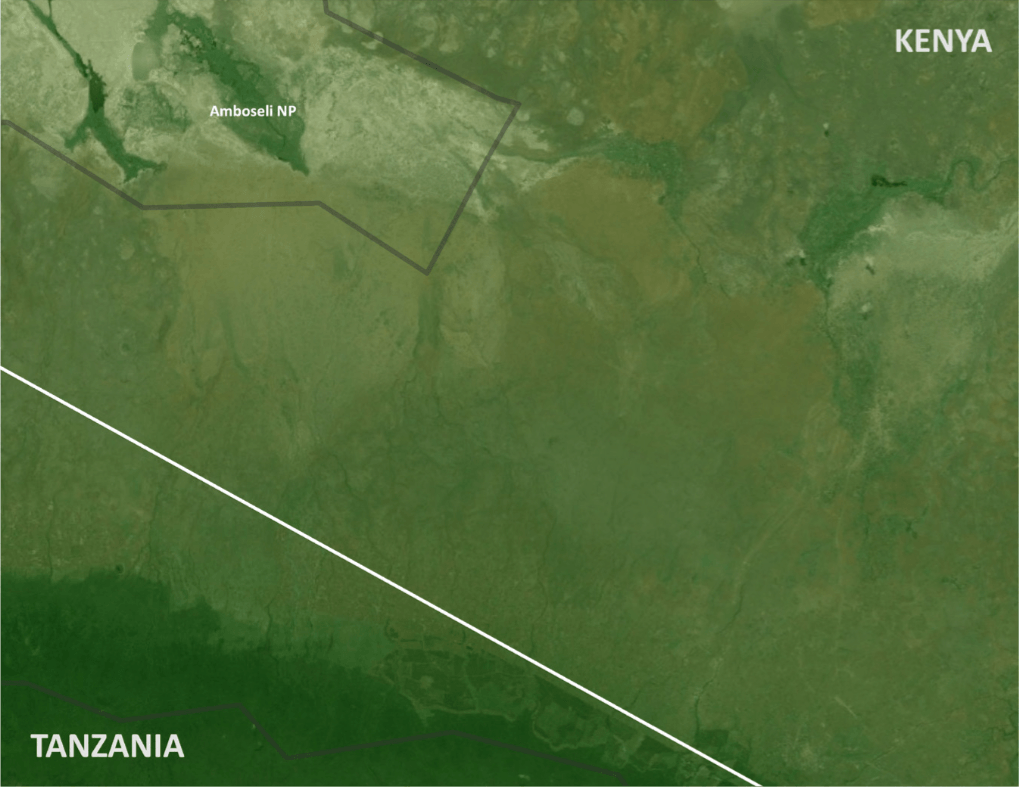
Look at the map above, at the vast area of unspoiled green. This is a part of the Amboseli ecosystem that Big Life helps to protect, as it looked decades ago. All wilderness. You can see Amboseli National Park at the top left.
In a fairly short space of time, this happened:
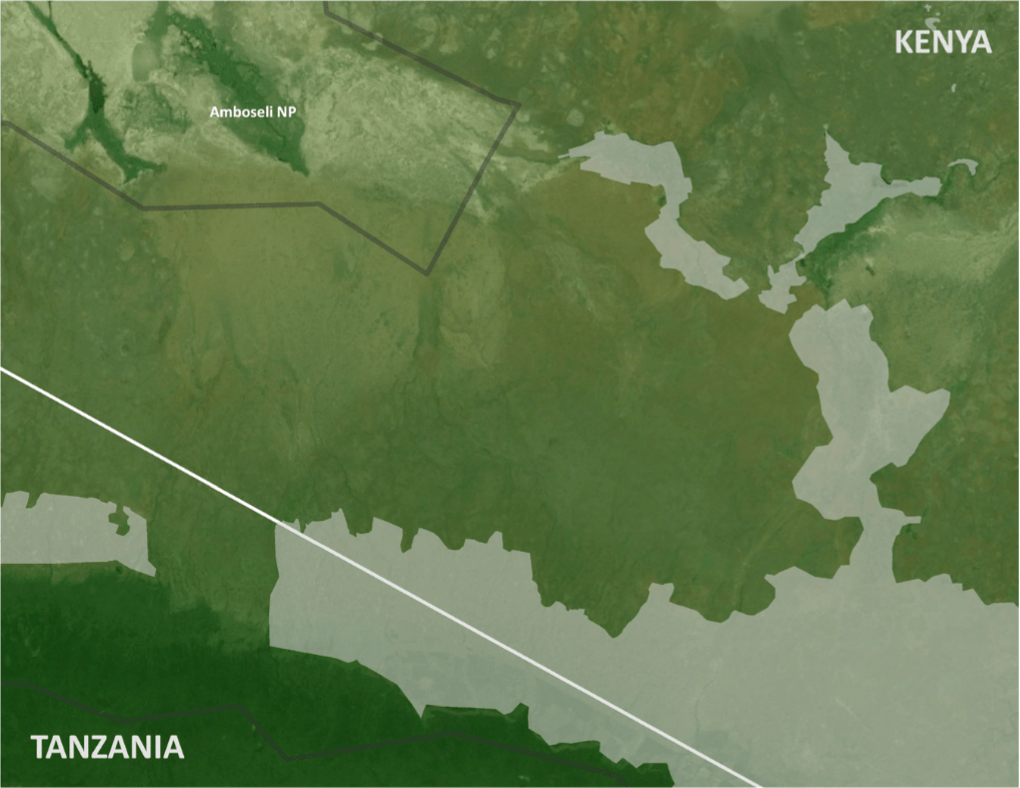
The grey areas are farmland, spreading into wildlife habitat, fed by diminishing glacial runoff from Mt. Kilimanjaro. Now guess what happens....

All those thousands of red crosses are where elephants have raided farmers’ crops.
Imagine that you are a poor African farmer who earns just a couple of thousand dollars a year from your crops, and one night you discover a big bull elephant trampling through your crops, destroying your very livelihood in just one night. You might be very tempted to throw that spear that protects your ability to feed you and your family.
And so, inevitably, this....
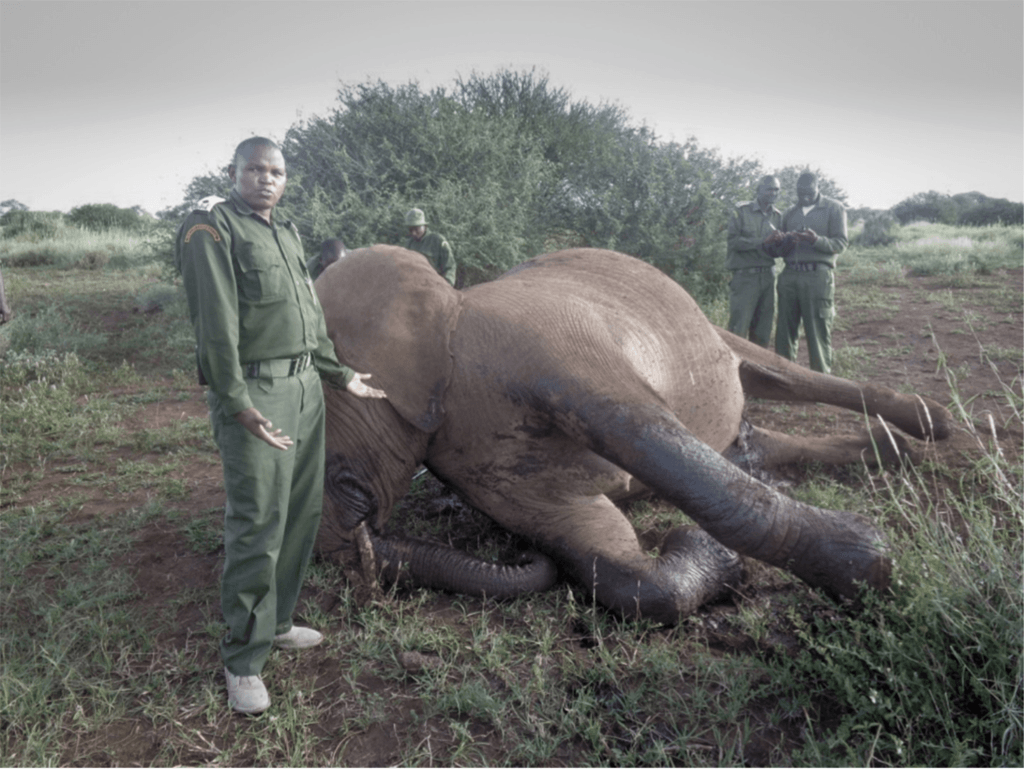
...is the result.
And it’s happening more and more often. Just this year alone, we have lost at least six elephants to human-elephant conflict. Last year, we lost eight.
That doesn’t even factor in the increasing number of elephants speared as a result of conflict, who have (so far) survived thanks to the veterinarians funded by the David Sheldrick Wildlife Trust and Kenya Wildlife Service. These include some of Amboseli’s most important and even famous breeding males, like Tim.
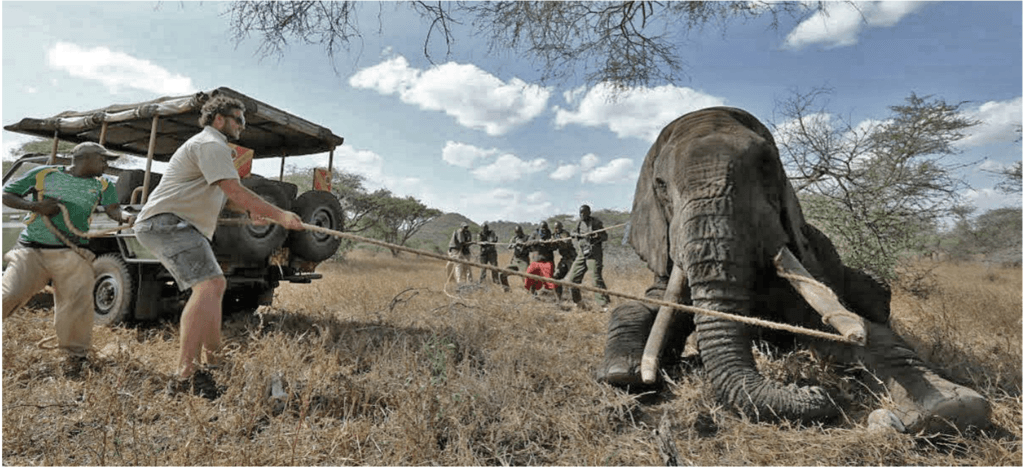
(In the photo above, Craig Millar, Head of Security for Big Life, and others help get a male called Jagged Ear into position for treatment for a spear wound).
This is why Big Life now has three patrol vehicles out every night, patrolling the land where farmland meets wildlife habitat.
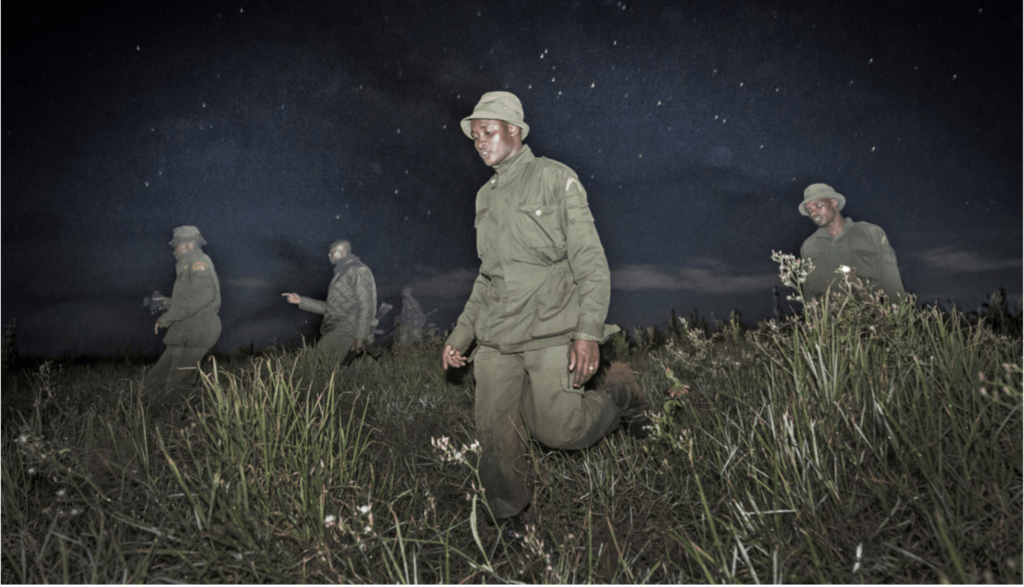
This is why hundreds of thunder flashes (harmless noisy pyrotechnic deterrents) are handed out every month to farmers to help them protect their crops. In the last three years, Big Life rangers have responded to over 2,100 incidents. It’s working: crop raiding is down, but not by enough. The spread of human population is a ticking time-bomb of problems.
Even on a continent the size of Africa, there isn’t enough room any more for both humans and wildlife, as every day, farmland and development encroach further upon the animals’ habitat.
However, there is something that would fundamentally transform the ecosystem in a positive way.
It may not be as ‘sexy’ as the good guys in green catching the bad guys who kill for profit and rob the communities of a future. But it’s no less important or necessary...
THE SOLUTION
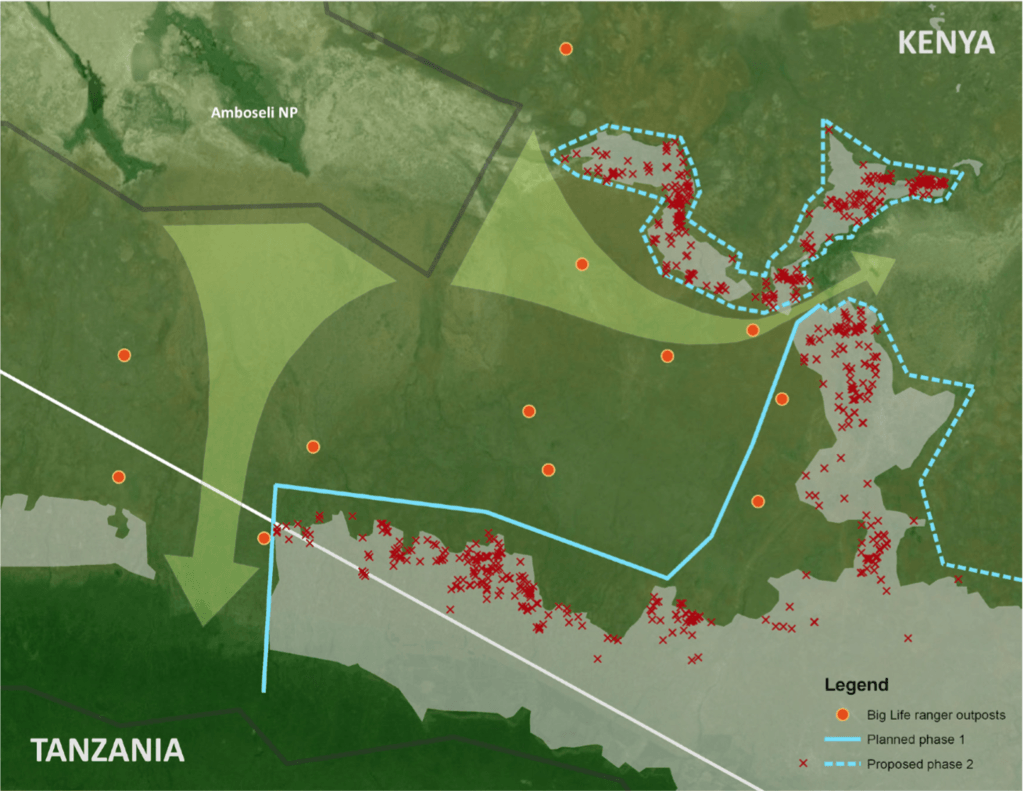
See the blue lines above? Those are lines of protection for the ecosystem in the form of a planned electrified fence, 120 km of it, that stretches across community land around the Kilimanjaro foothills.
That fence would protect farmers’ crops from being raided by wild animals, and simultaneously help prevent the farmland from further encroaching upon wildlife habitat.
See those green arrows? Those are the wildlife migration corridors, where the elephants and other animals are being squeezed through ever-narrowing gaps between the farmland.
The narrow gap to the east is the truly critical Kimana corridor. There, like plaque clogging more and more of an artery, less than 1 km of land remains for the wildlife to migrate between the farms. If that artery closes up, there will be huge negative consequences for the elephants and other wildlife in the ecosystem.
Two years ago, seeing this coming (but faster than we ever imagined), Big Life commissioned a study from Space for Giants, to analyze the best course, in all senses. Meanwhile, countless meetings have been held with the local communities and authorities.
The result? Everyone is on board, willing to contribute towards monthly maintenance costs, and raring to go.
The solid blue line on the map is the first 40 km of fence, the most urgently needed. The fence of choice, made of multiple electrified wires and designed to keep out elephants, will cost about $10,000 per km. That’s $400,000 to complete this first, most urgent stretch of fence.
We are taking a risk in asking you for this. The money for this critical project is not included in our annual budget that covers our existing general operations, which also need funding.
But with every passing day, this problem becomes more serious, complicated and deadly. It’s not just the growing number of elephants being killed, it’s also the farmland spreading, and land ownership fragmenting. So we must act now.
MATCHING DONATION
An extraordinarily generous donor has committed to match every donation made up to $200,000.
To make our target for this first 40 km, we need your help to raise the other $200,000.
Today, you could set in motion the construction of that life-giving fence. When built, if you come to visit Amboseli, you won’t see the fence unless you go looking for it. But you WILL see the elephants and other animals who are gloriously alive as a result of it.
All we need now is the funding. All we need now is YOU to help make this happen.
Please help Big Life create this line of protection, this transformational literal life-saver that will enable this unique and extraordinary ecosystem to survive and thrive.
Thank you as always for your support,
Nick Brandt & Richard Bonham
